Good Morning Sarah! Thanks for taking time out of your, no doubt, busy schedule to interview with me! Before we chat about your writing (and your book: Unexpected Gifts) I’d like to take some 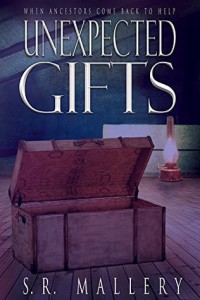 time to talk about you. And, this will also help your readers get to know a favored author better.
time to talk about you. And, this will also help your readers get to know a favored author better.
So, I was reading through your bio and I agree that you have definitely worn some interesting “hats” thus far in your life.
Let’s go back a bit further though, because I’m curious about what came before. Where were you born? Did you grow up in the same location, or did your family move later on?
I was born in New York City––Manhattan, to be exact. I lived there until the age of fourteen. Then, due to my father’s work, my family had to relocate to Los Angeles, California.
What was your childhood like? What sort of things did you do for fun?
You mentioned in your website bio that you were a classical/pop singer/composer. Did your love of music begin as a small child?
I had a very happy childhood. We lived in an area called Greenwich Village in New York City and back then, it housed many artists, ‘Beatnicks,’ coffee houses, and local grocery stores with sawdust on the floor and giant pickle barrels blocking the aisles.
Our apartment was a duplex on Bleecker Street––nondescript on the front side, a world of fun and adventure in its back yard. That yard, called Bleecker Gardens, was like a little community for the various other townhouses, apartments and houses in the area. With a low-lying empty concrete pool, a jungle gym, a large, slate-stoned courtyard, it provided endless hours of non-stop frolicking with kids from the neighborhood. Hours that were wonderful for us and peaceful for the parents who didn’t have to worry about their children being on the New York City streets. ‘A park in the middle of cement’ someone once labeled it, and indeed that was true. My brother and I would play to our hearts content until my mother opened up our back door to call us in for the night.
In the summers, I was often up in Northwestern Connecticut, staying at my grandmother’s large 18th century house with my cousins, running barefoot until the soles of our feet resembled leather, swimming in the local lake, riding ponies (well, they did, I just tried to!), and having watermelon seed fights in the huge, pastoral back yard. So much fun!
As for music, I always assumed I’d be a singer. Not necessarily an opera singer, but some sort of classical one. By the time I got to high school, I had enrolled in a specialized public school as a voice student. It was there that I had my first voice lessons. And although my family moved out to the west coast later that year, I returned to an eastern college as a voice major.
What have you sung and/or composed? And what was it that made you move on from that career path?
My compositions were for an educational filmstrip company. Light, airy, my music contained at most two to three instrumentals to go along with slide shows of instructional photos.
One of my first professional singing jobs was at a majestic cathedral in Los Angeles. The acoustics (they had won several awards for that) made it perfect for my light, lyrical soprano voice. But I was itchy to ‘loosen up,’ so I joined a band and also performed in small clubs at night. Church music during the day, Disco at night. Yin and Yang.
But I discovered something very important about myself. After all those years of visualizing myself as being a professional singer, the reality was I didn’t enjoy performing solo. My nerves always got in the way and when customers wanted to just chat or the espresso coffee machine hissed and gurgled during my performances, I’d get so annoyed. Time to move on.
That’s understandable. I’m certain there are many who can empathize with the annoyance of disruptive noise interruptions.
Tell me about the production art and calligraphy period of your life.
In my younger years I actually learned calligraphy––I find it to be an incredibly beautiful art form. I had always helped support myself through college and afterwards by being a secretary. Typed a mean 95 wpm. But helping executives rewrite their memos, articles, and reports at one tenth their salary started to wear thin. A friend introduced me to production art, which I did for four years. Back then there were no instant layouts on a production art software program; you literally had to line up either a sheet of type, a line of type or even one letter of type with your T square to fit it into the copy on the ad ‘board’. In other words, a lot of exacting work!
During that time I entered the world of calligraphy. I had admired my friend’s calligraphic rendition of my wedding invitation so much I decided I wanted to learn how to do it. Next came workshops from some of the best calligraphers in America. My life became a combination of production art in an ad agency during the day, calligraphy at night. I enthusiastically traced letters, made crazy swirls to loosen up, and after I turned professional, wrote on certificates, poems, signs, and designed some greeting cards. I even wrote my grocery lists in calligraphy!
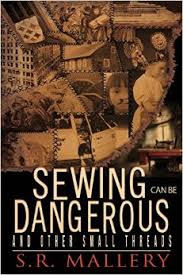 Next on your life journey you were an “award winning quilt artist/teacher” which I’m thinking might have influenced the writing of your previous book: Sewing Can Be Dangerous? *smile* What propelled you into this field?
Next on your life journey you were an “award winning quilt artist/teacher” which I’m thinking might have influenced the writing of your previous book: Sewing Can Be Dangerous? *smile* What propelled you into this field?
(I used to quilt with my grandmother, so seeing or hearing about quilting always brings back happy memories).
I’ve always loved fabrics––their colors, their texture. When I stayed up in Connecticut, each of my grandmother’s bedrooms had a quilt on the bed. Some of them had been made especially for her (she once told me she had paid the quilters not by the hour but by each spool of thread!), some had been bought at the local flea market. So when I took a small hand-quilting class, I got so excited. I sewed one pillow top after another, often working into the wee hours of the morning. That skill morphed into machine quilting (carpal tunnel had reared its ugly head). I began teaching classes in that, entered some juried shows, and got various commissions. And yes, by the time I started to write my stories in Sewing Can Be Dangerous, I had been surrounded by quilts, fabrics, and threads in my studio for over twenty years!
And finally, your occupational path broadened to include writing. I’m presuming you must have always had a love of books and reading, but when did you realize that you also wanted to write?
Is writing something you can see yourself doing for the remainder of your career?
I grew up with professional writers. Our apartment in New York was filled with books, as was the case in most of my relatives’ homes. I fell asleep to the sound of my father’s manic tapping on an old Underwood typewriter, and our 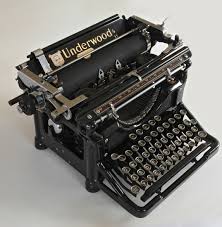 family discussions at the dinner table often revolved around references to books, movies, plays, and encyclopedic articles. Lofty stuff at times, and far too intimidating for me to try my own hand at composing when I grew up. In other words, as much as I was drawn to writers and books, there was no way I was going to try and be an author!
family discussions at the dinner table often revolved around references to books, movies, plays, and encyclopedic articles. Lofty stuff at times, and far too intimidating for me to try my own hand at composing when I grew up. In other words, as much as I was drawn to writers and books, there was no way I was going to try and be an author!
But then, much, much later, when I was a fully matured woman, I suddenly decided to try and write a story. Wow! The sensation of creating characters and plots hit me like a ton of bricks and like an addict I couldn’t stop. A potential new career had been born. Now, I love connecting with other authors, am looking forward to creating a blog in the future and, of course, always scribbling away!
How did Unexpected Gifts come to be? Was there one specific thing that sparked your imagination, or did it grow more slowly over time?
Even as a child, I loved pouring over my family’s photo albums. I would study those images and wonder what their lives were like. Were they happy? Sad? Lonely? Frustrated?
I have also always been drawn to U.S. history, so when I decided to try my hand at writing a novel (I had already written Sewing Can Be Dangerous), I settled on putting these two elements together. But how? I asked myself. Then, one day I was reading some letters that my father had written to my mother during WWII, when she was in London and he was in Italy. Typewritten, single-spaced, they were a fascinating combination of world events and a couple yearning for each other.
In a flash I knew I wanted to have my main modern protagonist read her ancestors’ letters/journals and in the process, by learning from their joys and their angsts, overcome her own problems. Voila! U. S. history + ancestors.
In the writing world, what’s next on your agenda? Can you tell us about your next project?
It’s called The Dolan Girls, an historical fiction Wild West novel. Here’s the synopsis:
Set in Nebraska during the 1800s, whorehouse madams, ladies of the night, a schoolmarm, a Pinkerton detective, a Shakespeare-quoting old coot, brutal outlaws, and a horse-wrangler fill out the cast of characters. Add to the mix are colorful descriptions of an 1856 land rush, Buffalo Bill and his Wild West Show, Annie Oakley, bank/train robberies, small town local politics, and of course, romance. Two in fact!
And finally, is there any advice you’d like to share with those out there who are aspiring writers, singers, song writers, or anything else that you’re experienced in?
LOL. That’s a tall order! Of course, for any creative field you want to get into you should do your homework. If you’re an aspiring writer, singer, or artist, read, listen to, or look at others in that particular field. Analyze their work. Think about what works for you, what doesn’t. Remember, your instincts are important, too! Another creative person might be very popular and you can certainly adopt some form of his or her traits, but to me, refusing to listen to your own heart will eventually get you in trouble.
I also think creativity needs support. To create in a vacuum isn’t always the best way to go. Reach out and try to connect with other like-minded people. Ultimately, I feel it’s a combination of believing in oneself and at the same time, being humble enough to use criticism from others to improve your craft.
Amazon ♦ Amazon IN ♦ B&N ♦ Kobo
Can we learn from our ancestral past? Do our relatives’ behaviors help mold our own?
In Unexpected Gifts that is precisely what happens to Sonia, a confused college student, heading for addictions and forever choosing the wrong man. Searching for answers, she begins to read her family’s diaries and journals from America’s past: the Vietnam War, Woodstock, and Timothy Leary era; Tupperware parties, McCarthyism, and Black Power; the Great Depression, dance marathons, and Eleanor Roosevelt; the immigrant experience and the Suffragists. Back and forth the book journeys, linking yesteryear with modern life until finally, by understanding her ancestors’ hardships and faults, she gains enough clarity to make some right choices.
S.R. Mallery has worn various hats in her life. First, a classical/pop singer/composer, she moved on to the professional world of production art and calligraphy. Next came a long career as an award winning quilt artist/teacher and an ESL/Reading instructor.
Her short stories have been published in descant 2008, Snowy Egret, Transcendent Visions, The Storyteller, and Down In the Dirt.
Google+ ♦ Goodreads ♦ Pinterest ♦ Amazon
Giveaway:
Prize: 10 Ebooks of Unexpected Gifts by S.R. Mallery
Ends: September 13th
Open Worldwide, to those who can legally enter and receive prize.
Tour organized by:
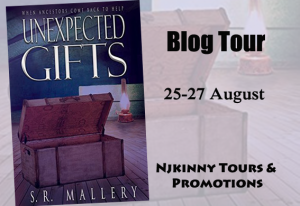
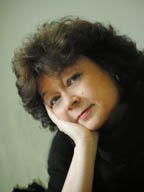

Thanks for hosting the Tour on your blog, Charline. 🙂
Always happy to host fellow authors!
Thank you SO much for interviewing me, Charline!
Was great to feature you, Sarah!